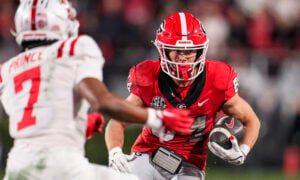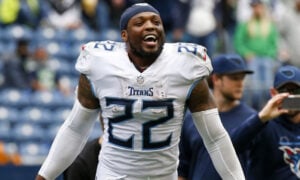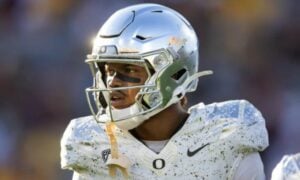Trading Tactics – League Power Ranking

There are as many styles and strategies to building a successful dynasty team as there are players in the NFL. Finding a style that YOU are comfortable with is key to building a successful approach over the long term.
Regardless of which tactics you use and to what degree you use them, trading must be near the top of your list if you are to maximize your efforts. Without successful trading, a coach is relegated to bettering his or her team only through either the rookie draft or via your league’s waiver wire system. Both these strategies are important on their own, but the rookie draft carries a high bust rate and you will only be one of many combing your waiver wire for talent. Successful trading, on the other hand, is the primary method towards addressing specifically identified needs of your team. The beauty about trading is that it doesn’t require the risks attached with the rookie draft (unless a draft pick is what you are seeking) or the mosh-pit that is your free agent pool.
In this exercise, we are focusing on identifying teams that are likely to have far better draft picks NEXT year than they did this year due to any number of reasons that we will discuss later.
My favorite part of trading has always been the psychological component required to do it well and pull off deals that benefit my team. There isn’t just one approach that works, you must be a chameleon – being what the other coach needs in order to get a deal through. Is your approach one of a used car salesman, the unassuming coach with a soft-sell approach or perhaps the stats-driven logic nut? The best traders that I’ve seen use whatever is needed at the time to get a trade through. If you aren’t able to change your style or tactics to fit the situation at hand, you will remain one dimensional and your results will suffer.
Let’s talk about your league power ranking.
Some sites actually have a power ranking while others simply rely on a first-to-last approach toward determining who the best and worst teams are, respectively. But what I’m talking about here is nothing formal that you need be concerned with. In the minds of most fantasy coaches, their teams are better-off than their most recent record or roster would suggest, regardless of whether this is true or not. Within this belief is an opportunity that too few other coaches take advantage of, the ability to specifically target teams that will likely be holding very high draft picks at the end of the following year.
Contending or deep teams in the dynasty format are usually there for a reason, their owners do the work necessary to objectively assess and procure talent, are always monitoring their depth chart, do their homework on players to maximize draft pick success and are effective traders. Let me also state that one of the most important attributes to being a successful dynasty coach is having a healthy level of paranoia. I don’t know many fantasy champions that aren’t and it’s the paranoia that is the gateway to the other “work” previously noted. Paranoia is an amazingly motivating feeling.
As it relates to the power ranking in your league, it’s imperative that you understand the haves and the have-nots at the end of each year. Ignore the conjecture and posturing about luck, the fantasy gods or under-performance. See instead, age, injury and the team dynamic. I call this looking at the “what is”. Your goal here is to find the team that finished higher than they should have or a team whose future prospects are far more dire than their record suggests due to aging players, possible retirement or other team dynamic. Specifically identify teams that have not identified or addressed depth issues such that a single key injury would render them largely uncompetitive.
There are, quite honestly, a vast number of variables in the equation that you can use towards ascertaining next year’s final standings and draft order. Sure, it’s a lot of logical guess work, but the alternative is to do nothing at all and you’ll be surprised at your ability to forecast future standings when you put the work in. When you are moving for a future second round selection, you should immediately know whether that selection is likely to be 18-20 (ten team league) or 12-14. If you have your eye on a would-be rookie in next year’s draft, your goal is to target a team that finished just out of the playoffs or as the lowest seed in the playoffs that is likely to take a significant drop next year.
Here are just some of the questions to ask yourself when surveying your league towards identifying these teams:
– Is there a team that won low-scoring affairs because of “off” weeks by stronger opponents?
– Is there a team that benefited from players that aren’t likely to reproduce last year’s results?
– Is there a team that was fortunate and had no injuries and has less than ideal depth?
– Is there a team that defied all logic in multiple weeks in winning their games?
– Is there a team that is relying on aging veterans that are at the end of their road?
Once you’ve done the work, you now break out your crystal ball towards building next year’s finish order. Look for the biggest disparity between last year’s finish and next year’s finish. This team is your target for draft pick acquisition. Remember, it’s not just about the first round. Many good rookies or greater team depth can be had in rounds below the first. The first pick in your second round can be very valuable as well.
One last piece of advice when it comes to actively discussing and bartering with your targeted coach. Use the “what is” of LAST year as your basis for the trade. This simply means that you are free to ignore all the reasons that you have come up with for targeting the coach in the first place and, instead, concentrate on all the reasons why this coach is going to repeat or even exceed his last year’s performance again next year. Your goal in these discussions is to minimize the value of the draft pick that you are seeking. You want your target coach to believe he has one hand on the league trophy next year and that his picks aren’t nearly as valuable as you believe they are. Of course, you know different.
If this all seems dirty and underhanded, it’s not. It’s the “what is” of the situation and trading in general. The quicker you can come to grips with it, the the quicker you’ll have a grip on the league trophy.
Good luck!
- Lineup Advice: Wrap-up, Thank You and Goodbye (TTFN) - January 1, 2024
- Lineup Advice: Week 17 – Championship Edition - December 26, 2023
- Lineup Advice: Week 16 – The “What is” Edition - December 19, 2023


































































